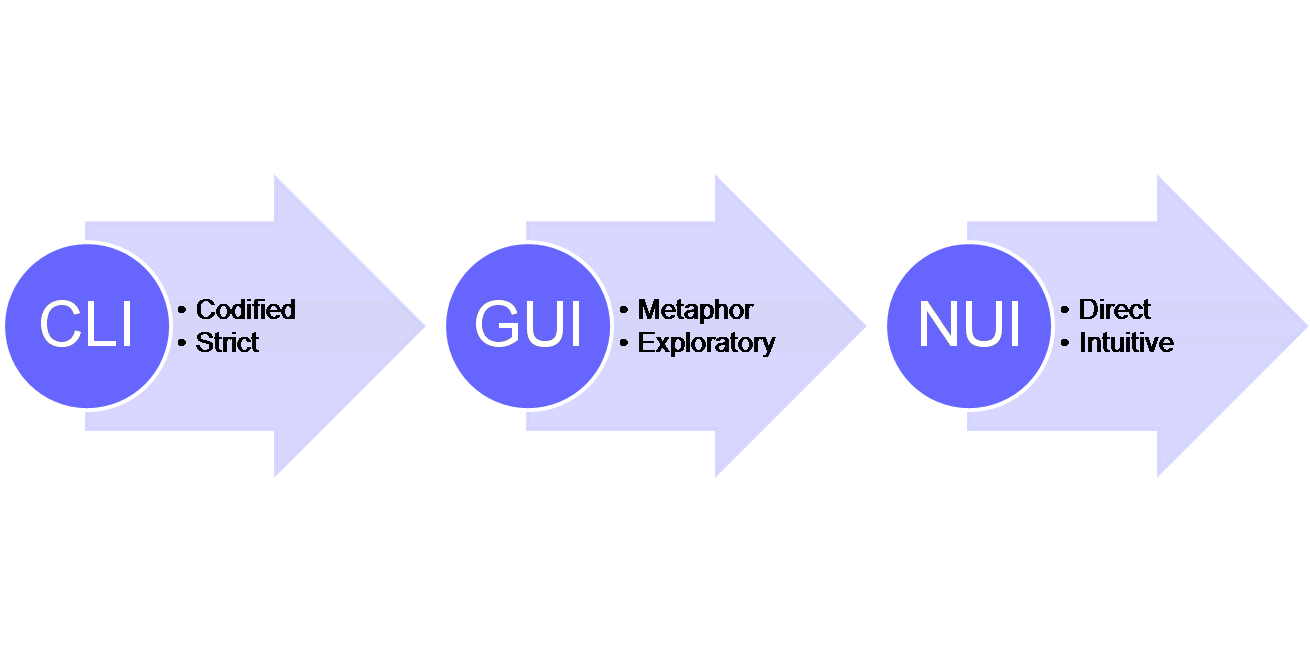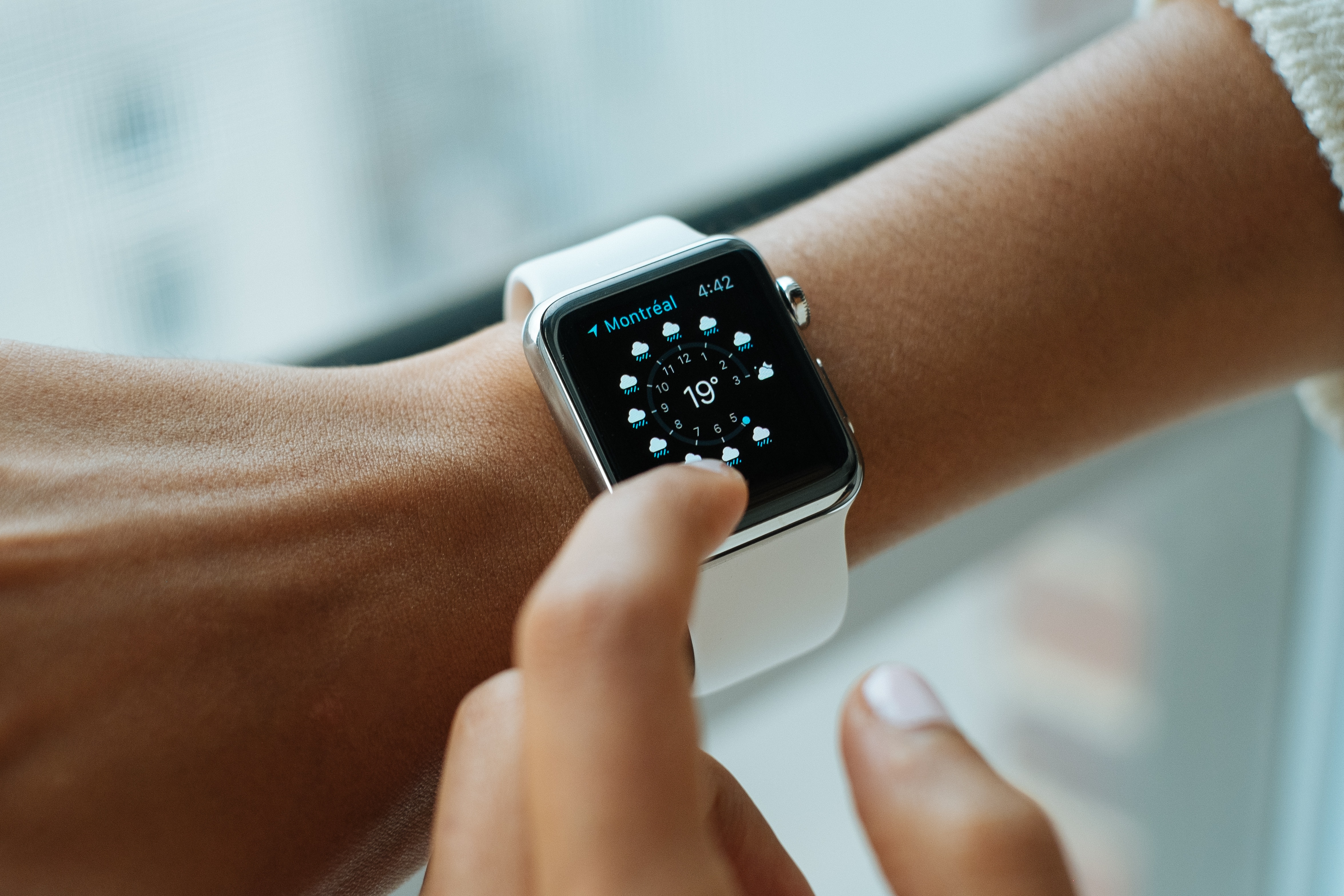|
Scratch Input
In computing, scratch input is an acoustic-based method of Human-Computer Interaction (HCI) that takes advantage of the characteristic sound produced when a finger nail or other object is dragged over a surface, such as a table or wall. The technique is not limited to fingers; a stick or writing implements (e.g. chalk, or a pen) can also be used. The sound is often inaudible to the naked ear (i.e., silent). However, specialized microphones can digitize the sounds for interactive purposes. Scratch input was invented by Mann et al. in 2007,Steve Mann,Natural Interfaces for Musical Expression: Physiphones and a physics-based organology, Proceedings of the 2007 Conference on New Interfaces for Musical Expression (NIME07), June 6–10, New York, NY, USA.Steve Mann, Ryan Janzen, Raymond Lo, and Chris Aimone, Inventing new instruments based on a computational `hack' to make a badly tuned or unpitched instrument play in perfect harmony, Proceedings of the 2007 International Computer Music ... [...More Info...] [...Related Items...] OR: [Wikipedia] [Google] [Baidu] |
Computing
Computing is any goal-oriented activity requiring, benefiting from, or creating computing machinery. It includes the study and experimentation of algorithmic processes, and development of both hardware and software. Computing has scientific, engineering, mathematical, technological and social aspects. Major computing disciplines include computer engineering, computer science, cybersecurity, data science, information systems, information technology and software engineering. The term "computing" is also synonymous with counting and calculating. In earlier times, it was used in reference to the action performed by mechanical computing machines, and before that, to human computers. History The history of computing is longer than the history of computing hardware and includes the history of methods intended for pen and paper (or for chalk and slate) with or without the aid of tables. Computing is intimately tied to the representation of numbers, though mathematical ... [...More Info...] [...Related Items...] OR: [Wikipedia] [Google] [Baidu] |
Chris Harrison (computer Scientist)
Chris Harrison is a British-born, American computer scientist and entrepreneur, working in the fields of human–computer interaction, machine learning and sensor-driven interactive systems. He is a professor at Carnegie Mellon University and director of the Future Interfaces Group within the Human–Computer Interaction Institute. He has previously conducted research at AT&T Labs, Microsoft Research, IBM Research and Disney Research. He is also the CTO and co-founder of Qeexo, a machine learning and interaction technology startup. Harrison has authored more than 80 peer-reviewed papers and his work appears in more than 40 books. For his contributions in human–computer interaction, Harrison was named a top 35 innovator under 35 by MIT Technology Review (2012), a top 30 scientist under 30 by Forbes (2012), one of six innovators to watch by Smithsonian (2013), and a top Young Scientist by the World Economic Forum (2014). Over the course of his career, Harrison has been awarded ... [...More Info...] [...Related Items...] OR: [Wikipedia] [Google] [Baidu] |
Natural User Interface
In computing, a natural user interface (NUI) or natural interface is a user interface that is effectively invisible, and remains invisible as the user continuously learns increasingly complex interactions. The word "natural" is used because most computer interfaces use artificial control devices whose operation has to be learned. Examples include voice assistants, such as Alexa and Siri, touch and multitouch interactions on today's mobile phones and tablets, but also touch interfaces invisibly integrated into the textiles furnitures. An NUI relies on a user being able to quickly transition from novice to expert. While the interface requires learning, that learning is eased through design which gives the user the feeling that they are instantly and continuously successful. Thus, "natural" refers to a goal in the user experience – that the interaction comes naturally, while interacting with the technology, rather than that the interface itself is natural. This is contrasted with t ... [...More Info...] [...Related Items...] OR: [Wikipedia] [Google] [Baidu] |
Wearable Computer
A wearable computer, also known as a body-borne computer, is a computing device worn on the body. The definition of 'wearable computer' may be narrow or broad, extending to smartphones or even ordinary wristwatches. Wearables may be for general use, in which case they are just a particularly small example of mobile computing. Alternatively, they may be for specialized purposes such as fitness trackers. They may incorporate special sensors such as accelerometers, heart rate monitors, or on the more advanced side, electrocardiogram (ECG) and blood oxygen saturation (SpO2) monitors. Under the definition of wearable computers, we also include novel user interfaces such as Google Glass, an optical head-mounted display controlled by gestures. It may be that specialized wearables will evolve into general all-in-one devices, as happened with the convergence of PDAs and mobile phones into smartphones. Wearables are typically worn on the wrist (e.g. fitness trackers), hung from the ... [...More Info...] [...Related Items...] OR: [Wikipedia] [Google] [Baidu] |
Scratch Input Musical Cyborg
Scratch or scratching may refer to: Science and technology * Scratch (programming language), an educational programming language developed by MIT Media Lab * Scratch space, space on the hard disk drive that is dedicated for only temporary storage * Scratching, a technique used in recrystallization * Scratch reflex, a response to activation of sensory neurons * "Scratches", a synonym for mud fever, an infection occurring in horses Arts, entertainment, and media Fictional characters * Scratch (robot), in the TV show ''Adventures of Sonic the Hedgehog'' * Scratch, a fictional character from the '' Gobots'' series * Scratch, a fictional character (who is the titular ghost) in the animated series television ''The Ghost and Molly McGee'' Films * ''Scratch'' (2001 film), a documentary about disc jockeys and hip-hop culture * ''Scratch'' (2008 film), a Polish drama film * ''Scratch'' (2010 film), a short film produced by Breakthru Films * ''Scratch'' (2015 film), a Canadian ... [...More Info...] [...Related Items...] OR: [Wikipedia] [Google] [Baidu] |
Daniel Wigdor
Professor Daniel J. Wigdor is a Professor of Computer Science at the University of Toronto. He was previously co-director of the university's Dynamic Graphics Project and a visiting associate professor at Cornell Tech. He has co-authored and contributed to several books, including "Brave NUI World" (2011), "The Human-Computer Interaction Handbook, Third Edition" (2011), and "Computer Science Handbook, Third Edition" (2014). Wigdor was awarded a prestigious Sloan Research Fellowship in 2015. His research is in the area of human-computer interaction, with major areas of focus in the architecture of highly-performant UI’s, in interaction and application models for mobile computing, in platform design for ubiquitous computing, and in post-WIMP interaction methods. Before joining the faculty at U of T in 2011, Daniel was a researcher at Microsoft Research, as well as the user experience architect of the Microsoft Surface Table and Microsoft’s Entertainment and Devices division. Da ... [...More Info...] [...Related Items...] OR: [Wikipedia] [Google] [Baidu] |
Human–computer Interaction
Human–computer interaction (HCI) is research in the design and the use of computer technology, which focuses on the interfaces between people ( users) and computers. HCI researchers observe the ways humans interact with computers and design technologies that allow humans to interact with computers in novel ways. A device that allows interaction between human being and a computer is known as a "Human-computer Interface (HCI)". As a field of research, human–computer interaction is situated at the intersection of computer science, behavioral sciences, design, media studies, and several other fields of study. The term was popularized by Stuart K. Card, Allen Newell, and Thomas P. Moran in their 1983 book, ''The Psychology of Human–Computer Interaction.'' The first known use was in 1975 by Carlisle. The term is intended to convey that, unlike other tools with specific and limited uses, computers have many uses which often involve an open-ended dialogue between the user a ... [...More Info...] [...Related Items...] OR: [Wikipedia] [Google] [Baidu] |
User Interfaces
In the industrial design field of human–computer interaction, a user interface (UI) is the space where interactions between humans and machines occur. The goal of this interaction is to allow effective operation and control of the machine from the human end, while the machine simultaneously feeds back information that aids the operators' decision-making process. Examples of this broad concept of user interfaces include the interactive aspects of computer operating systems, hand tools, heavy machinery operator controls and process controls. The design considerations applicable when creating user interfaces are related to, or involve such disciplines as, ergonomics and psychology. Generally, the goal of user interface design is to produce a user interface that makes it easy, efficient, and enjoyable (user-friendly) to operate a machine in the way which produces the desired result (i.e. maximum usability). This generally means that the operator needs to provide minimal in ... [...More Info...] [...Related Items...] OR: [Wikipedia] [Google] [Baidu] |
Experimental Musical Instruments
''Experimental Musical Instruments'' was a periodical edited and published by Bart Hopkin, an instrument builder and writer about 20th century experimental music design and custom made instrument construction. Though no longer in print, back issues are still available. The material and approach of EMI can now be found electronically on their site hosted by Bart Hopkin. This site is, together with www.oddmusic.com the main source on the internet for experimental musical instrumentalism.https://www.google.com/search?hl=en&client=safari&rls=nl-nl&q=experimental+musical+instrument&btnG=Zoeken&lr= Although only old editions of the magazine are still available and no newer editions appear, the name is still in use as the publisher for many of the book written by Bart Hopkin and co-writers. Publications *''Experimental Musical Instruments'', magazine, 70 issues appeared as a printed publication between 1985 and 1999, later on re-issued as well on CD-ROM. It was first headquartered in ... [...More Info...] [...Related Items...] OR: [Wikipedia] [Google] [Baidu] |





